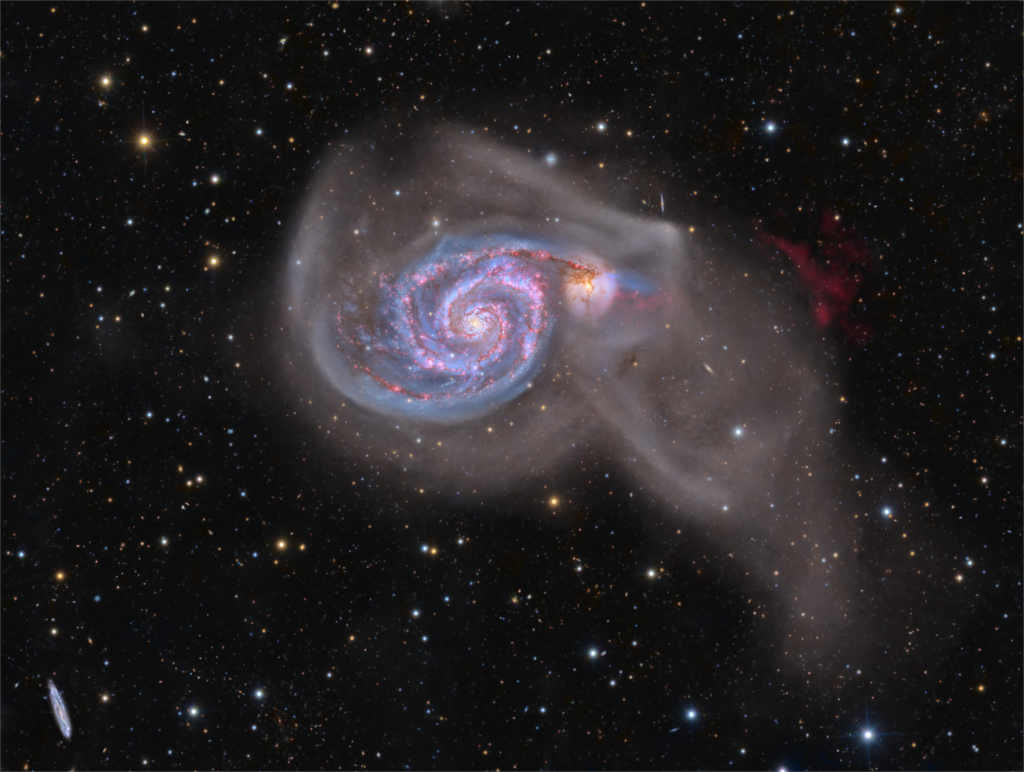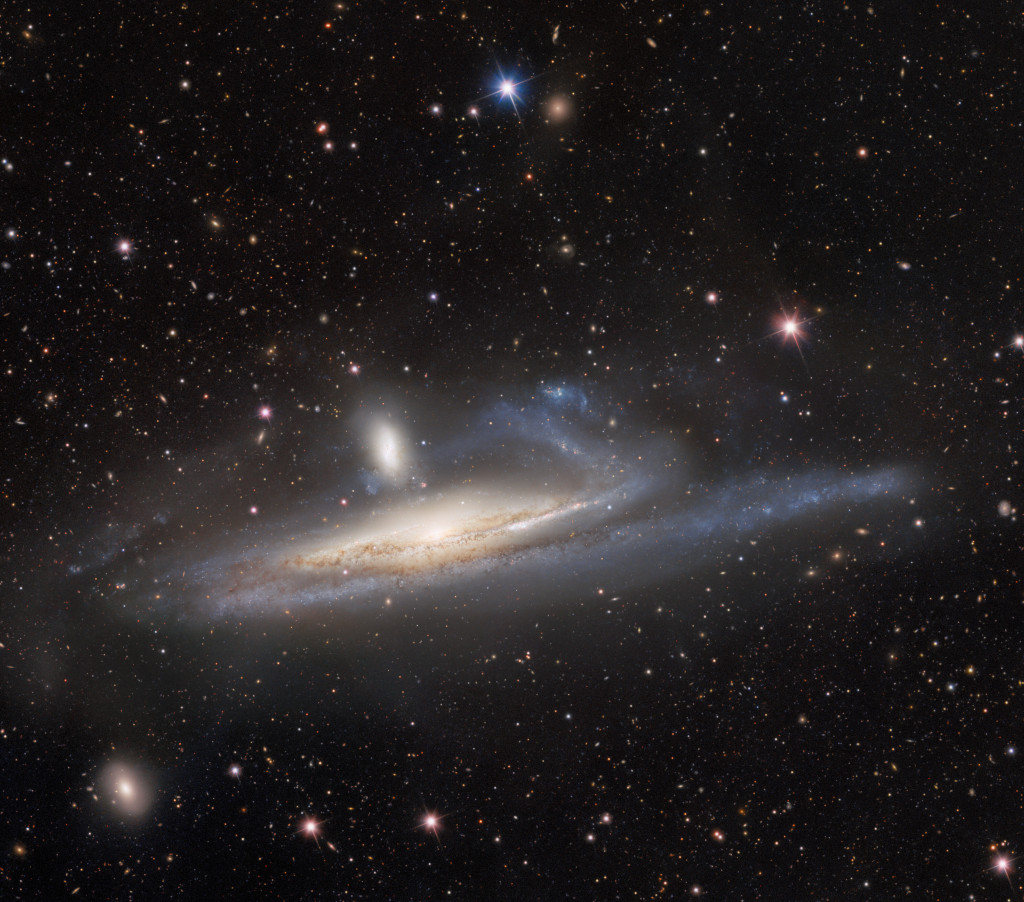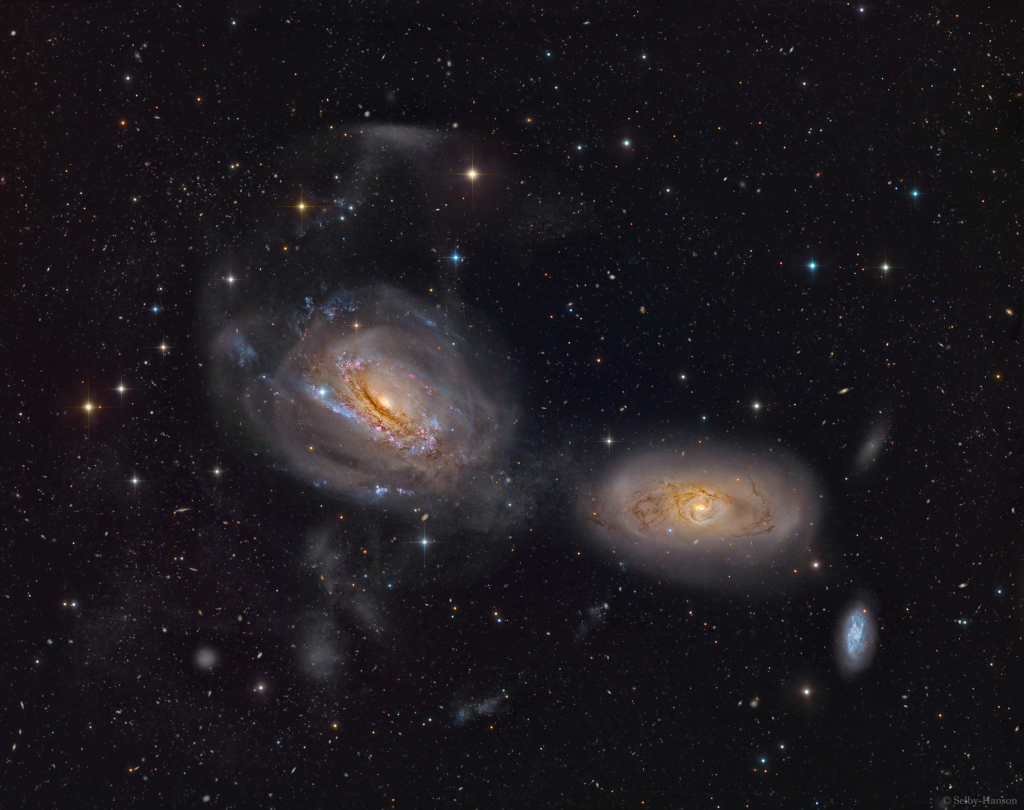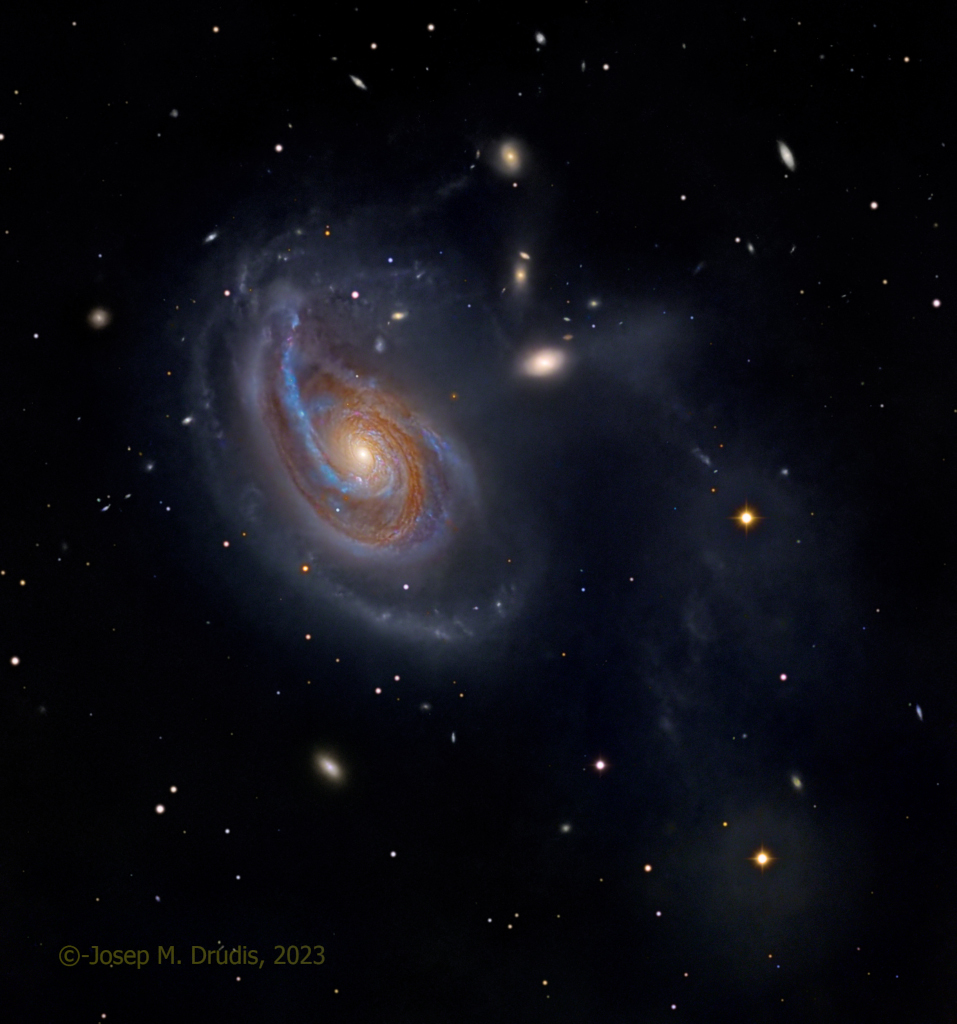哈勃影像: 受到强烈扰动的星系UGC 1810
A bright galaxy with unusual blue spiral arms is shown against a dark starfield. The outer part of the spiral appears as a blue ring, while the inner part appears to have separate — and more tan — spiral structure. Please see the explanation for more detailed information.
一个明亮的星系,有着不同寻常的蓝色旋臂,映衬着一片漆黑的星空。旋臂的外部呈现蓝色环状,而内部则呈现出独立的、更偏黄褐色的螺旋结构。有关更多详细信息,请参阅说明。










